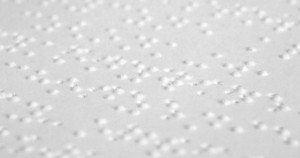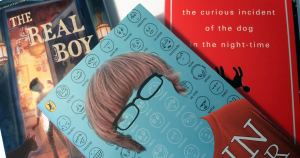
ASL: Writing a Visual Language
There are many different ways an author can express a sign language on the page; let’s take a closer look.

There are many different ways an author can express a sign language on the page; let’s take a closer look.

There was something in this story—some intimate, intangible Knowing—that made me believe, This author has been here. This author has walked in these shoes.

Romanticization is a common element of mental illness narratives, including many in the YA category; what kind of message does that send?

Today we get most forms of entertainment at the push of a button, so we tend to hate having to wait. The situation is even worse if you can’t read print—resulting in an endless waiting game for blind readers.

Stoner & Spaz is funny and often unafraid of ambivalence, and I feel similarly ambivalent: liking a lot of what I got, yet wanting more of the stuff between the lines of what Ben says and does.
Which are our contributors’ least favorite disability tropes?

Although the author got some of the details about blindness wrong, she seems very committed to diversity, and I enjoyed this book a lot.

Hunt captures the inner confusion when you aren’t getting something everyone else grasps easily that is a pre-diagnosed dyslexic’s life. Ally’s situation conjured up so many memories at first that it was hard for me to read, but the reward was great.

Paperboy is only one character’s experience of stuttering, but it’s an honest one. And in a world where so often these stories aren’t told, that comes across like a breath of fresh air.

Here is a key insight to creating realistic autistic characters: We do not do the visibly autistic things we do because of “autism,” full stop. Like non-autistic people, we are responding to our experiences of the world. Those experiences simply differ from those of non-autistic people.